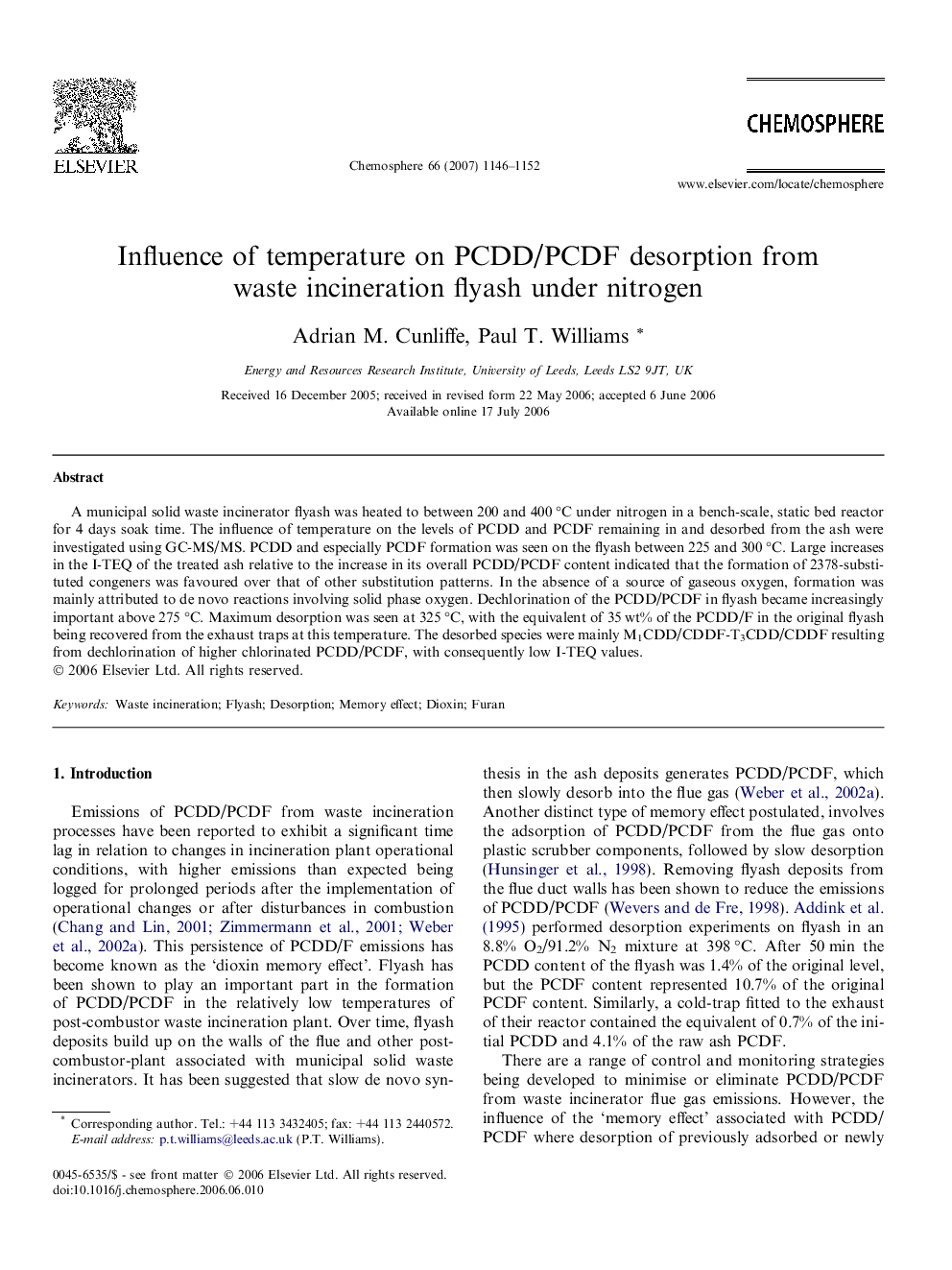| Article ID | Journal | Published Year | Pages | File Type |
|---|---|---|---|---|
| 4416185 | Chemosphere | 2007 | 7 Pages |
A municipal solid waste incinerator flyash was heated to between 200 and 400 °C under nitrogen in a bench-scale, static bed reactor for 4 days soak time. The influence of temperature on the levels of PCDD and PCDF remaining in and desorbed from the ash were investigated using GC-MS/MS. PCDD and especially PCDF formation was seen on the flyash between 225 and 300 °C. Large increases in the I-TEQ of the treated ash relative to the increase in its overall PCDD/PCDF content indicated that the formation of 2378-substituted congeners was favoured over that of other substitution patterns. In the absence of a source of gaseous oxygen, formation was mainly attributed to de novo reactions involving solid phase oxygen. Dechlorination of the PCDD/PCDF in flyash became increasingly important above 275 °C. Maximum desorption was seen at 325 °C, with the equivalent of 35 wt% of the PCDD/F in the original flyash being recovered from the exhaust traps at this temperature. The desorbed species were mainly M1CDD/CDDF-T3CDD/CDDF resulting from dechlorination of higher chlorinated PCDD/PCDF, with consequently low I-TEQ values.
